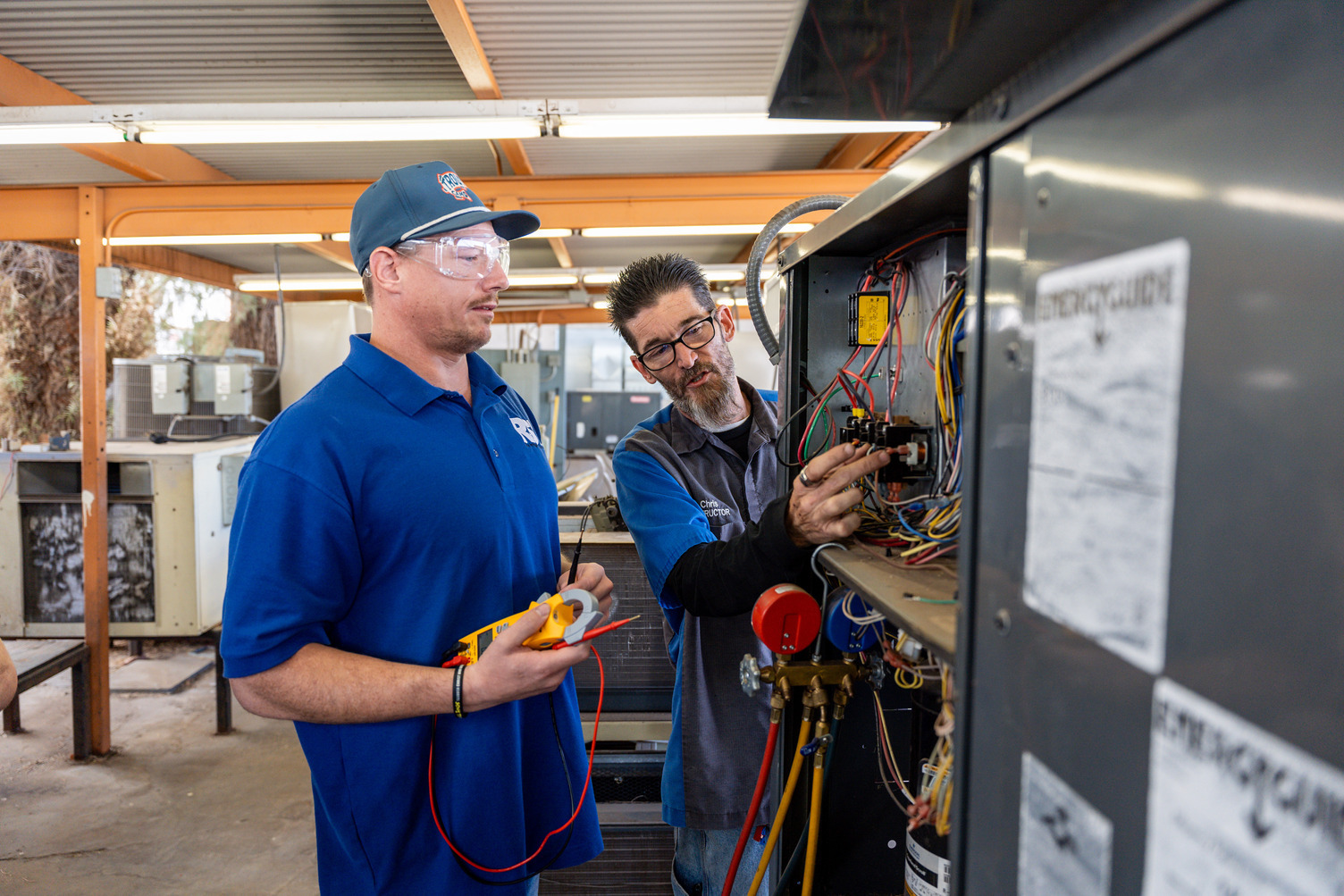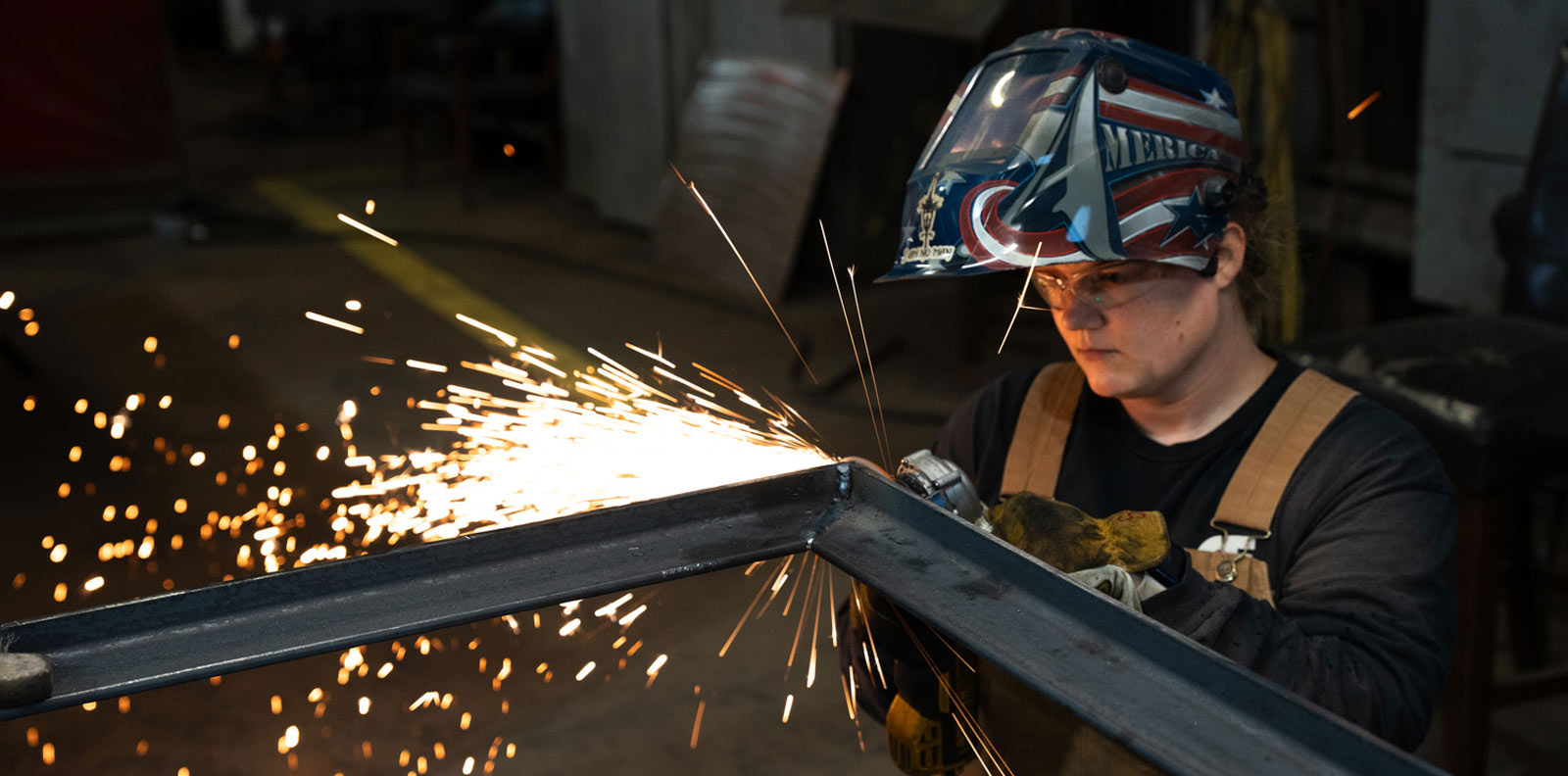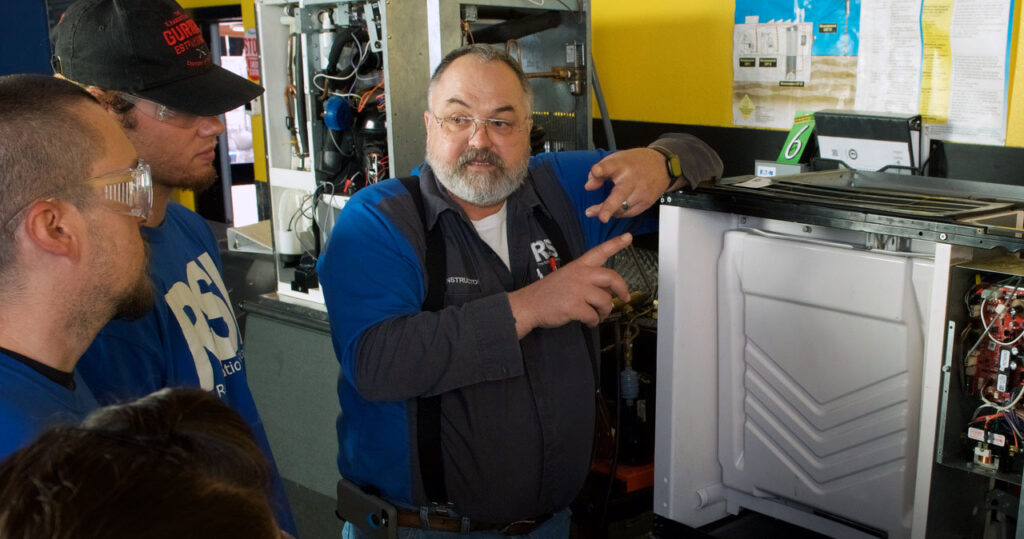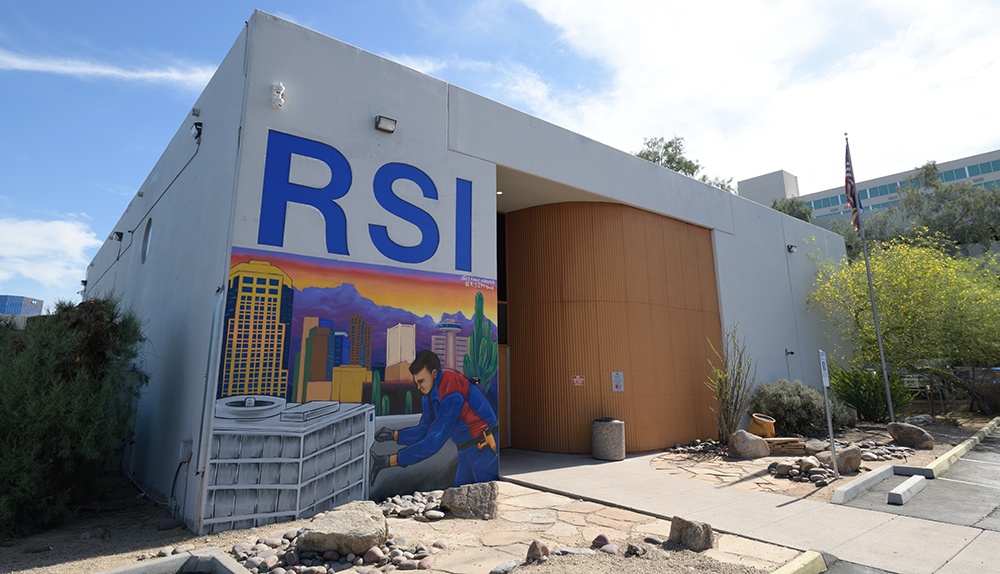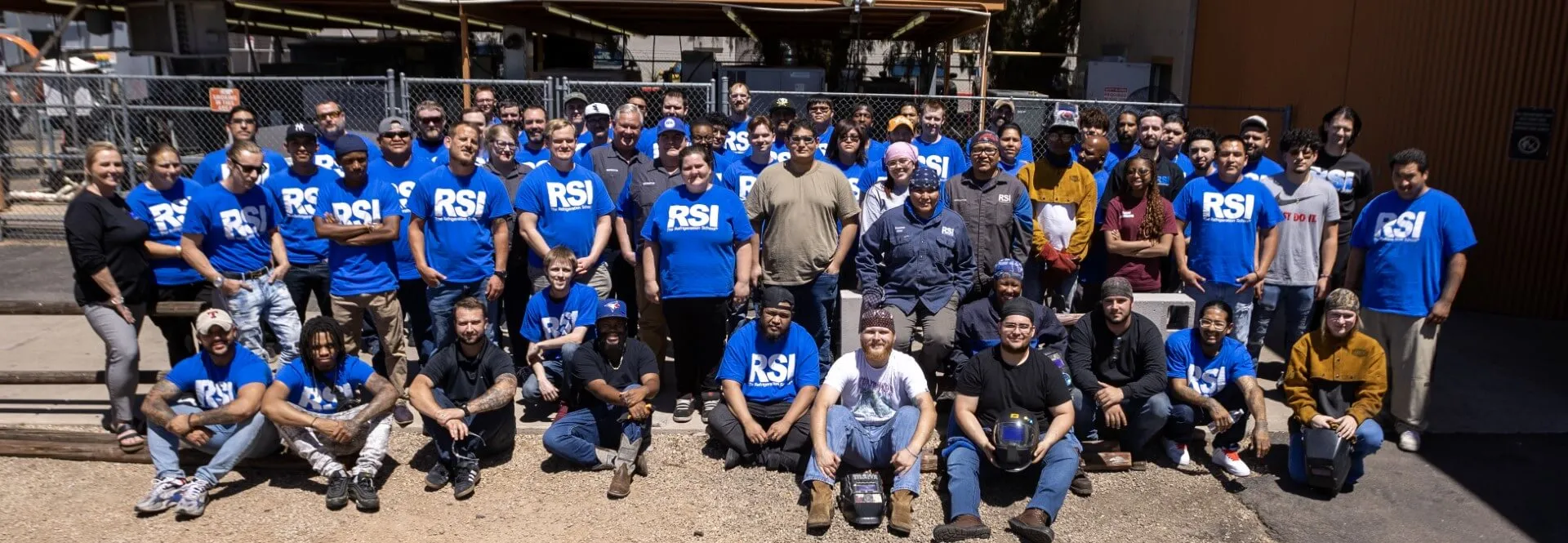RSI is a Great Training Option for Everyone
Learn more about how we can prepare you to advance your career.
Students wondering how to get into trade school in Arizona will first need to meet a few baseline admission requirements. Most vocational and technical programs require a high school diploma or GED. Submitting official transcripts early can help avoid delays during the application process.
Depending on the field you’re interested in, additional criteria may apply. For example:
- Electrical programs may favor applicants with a strong foundation in mathematics due to the technical nature of circuit analysis and load calculations.
- Welding programs may involve physical assessments or tool familiarity, as the work can be physically demanding.
- HVAC programs often welcome students without prior experience, though basic mechanical aptitude is helpful.
If you’re currently in high school or exploring trade school as a career transition, it’s helpful to begin planning early. Career fairs, school counselors, and informational sessions can provide valuable insight into different fields and program options.
Researching Trade School Options in Arizona
Arizona offers a variety of trade school options, particularly in metropolitan areas like Phoenix. Choosing a school that aligns with your goals requires more than reviewing brochures. Accreditation, program offerings, and student support services are all important factors to evaluate.
When researching trade schools:
Get Started on the Path to a New Career
Fill out our form to learn how we can help you change your life.
- Verify accreditation. Accredited schools meet quality standards and often provide access to financial aid. Accreditation also supports smoother transitions into the workforce or further education.
- Ask about career services. Some institutions offer job placement support, employer partnerships, and resume-building assistance to help graduates connect with job opportunities.
- Review program offerings. Choose a school that focuses on your area of interest—whether it’s HVAC, welding, or electrical technology—and offers modern training equipment and relevant curriculum.
In-person campus visits can be helpful for assessing labs, classrooms, and the overall learning environment. Many schools also offer virtual tours to accommodate students outside the area.
Selecting a Program That Supports Your Career Goals
Trade school programs prepare students for specific careers, so selecting one that matches your professional interests is a necessary step. Arizona’s labor market shows continued demand for skilled workers in HVAC, welding, and electrical trades*.
When evaluating program options:
- Review the class schedule: Many schools offer day and evening programs to accommodate students with work or family obligations.
- Look for hands-on training: Practical experience is a core part of trade education. Students should expect to work with real tools, systems, and equipment under the guidance of experienced instructors.
- Check for employer relationships: Programs with ties to local industries can support students through internships or job referrals after graduation.
Choosing the right program can contribute not only to job readiness but also to long-term satisfaction in your chosen trade.
Preparing Your Application and Financial Plan
Once you’ve selected a school and program, the next step is organizing your application and financial documents. Many Arizona trade schools accept federal financial aid, and students are encouraged to complete the Free Application for Federal Student Aid (FAFSA) to explore available support.
Typical application materials may include:
- High school transcripts or GED documentation
- A completed application form
- Proof of residency (if required)
- Placement test scores (if applicable)
Some programs may request additional information or assessments based on the trade. For instance, welding programs may require a dexterity demonstration, while electrical programs may include a basic math evaluation. Keeping a checklist and adhering to application deadlines can make this process more manageable. Admissions advisors can also provide personalized support if needed.
Preparing for Enrollment
After submitting your application and confirming your financial aid, it’s time to begin preparing for the start of your program. This includes handling logistical details and familiarizing yourself with your chosen school’s expectations.
Steps to take include:
- Confirming your financial aid or payment plan
- Coordinating transportation or housing, if needed
- Acquiring any tools, safety gear, or uniforms specified by your program
You may also want to connect with your school’s career services team early on. Many institutions offer job search preparation, resume workshops, and networking opportunities to support students as they approach graduation and enter the workforce.
Want to Learn More?
Trade schools in Arizona offer a practical path toward a career in skilled trades. Programs in fields like HVAC, electrical work, and welding provide hands-on training and job-focused instruction in a format that can typically be completed in under a year.
At The Refrigeration School (RSI) in Phoenix, students gain access to industry-aligned curriculum, experienced instructors, and dedicated career services. Whether you’re just starting out or seeking a new direction, RSI’s programs are designed to help prepare students for entry-level roles in growing industries.
To learn more about enrollment, program options, or class schedules, contact RSI or call 1-855-935-0486 today.
-
*Employment is expected to grow for Welders, Cutters, Solderers & Brazers (514121):
-
In the U.S.: from 454,500 to 463,800 jobs through 2033
-
In Arizona (AZ): from 6,740 to 7,730 jobs through 2032
-
-
Employment is expected to grow for Heating, Air Conditioning, and Refrigeration Mechanics and Installers (499021):
-
In the U.S.: from 441,200 to 481,300 jobs through 2033
-
In AZ: from 9,140 to 10,810 jobs through 2032
-
-
Employment is expected to grow for Electricians (472111):
-
In the U.S.: from 779,800 to 864,100 jobs through 2033
-
In AZ: from 17,730 to 21,040 jobs through 2032
-
-
Employment is expected to grow for Plumbers, Pipefitters, and Steamfitters (472152):
-
In the U.S.: from 473,400 to 499,700 jobs through 2033
-
In AZ: from 11,970 to 13,670 jobs through 2032
-
-
Employment is expected to grow for Electrical Power-Line Installers and Repairers (499051):
-
In the U.S.: from 123,400 to 132,800 jobs through 2033
-
In AZ: from 2,340 to 2,440 jobs through 2032
-
-
Employment is expected to grow for Industrial Machinery Mechanics (499041):
-
In the U.S.: from 429,500 to 503,300 jobs through 2033
-
In AZ: from 3,850 to 5,000 jobs through 2032
-
Source:
https://www.careeronestop.org — sponsored by the Department of Labor
www.bls.gov, reported as of May 2024. Data pulled April 2025.
